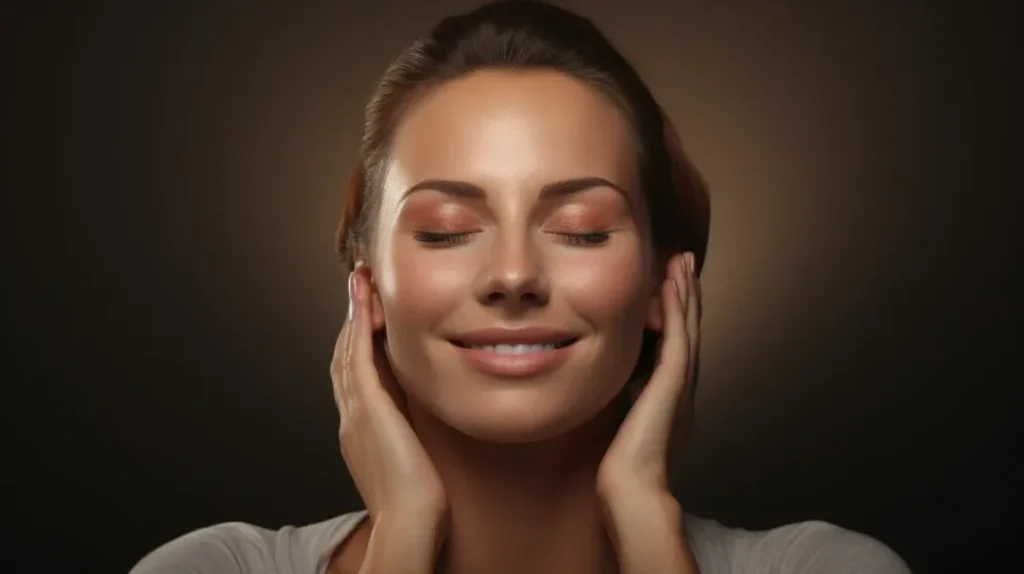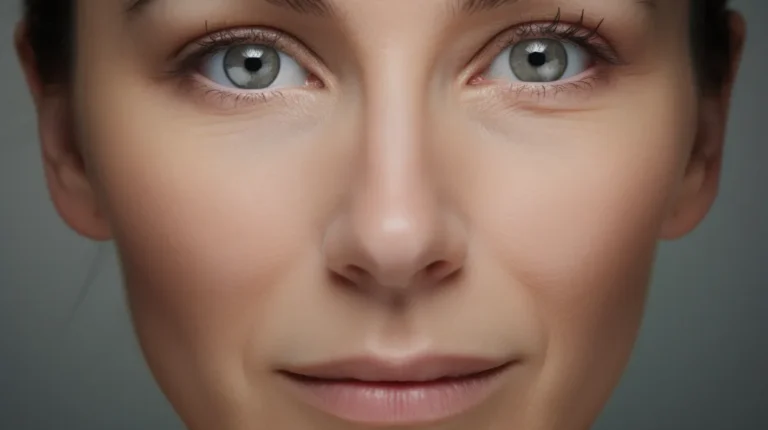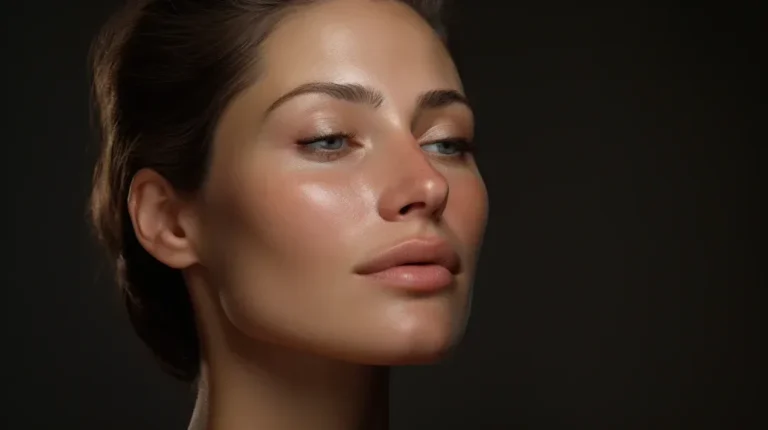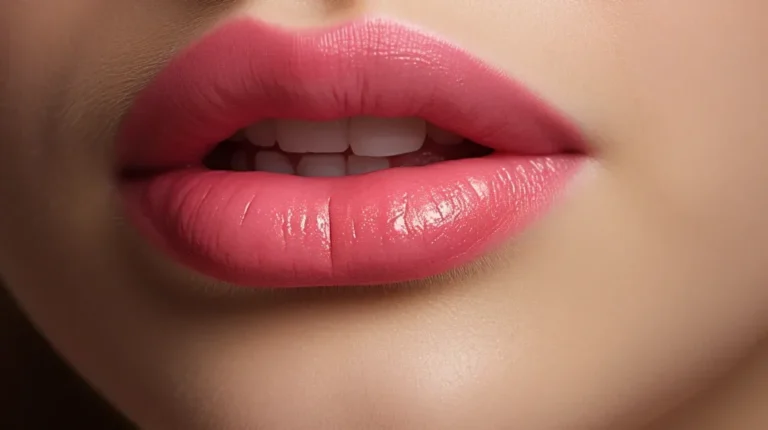The Surprising Benefits of the Botox Vial You Never Knew
Are you ready to be amazed by the hidden treasures within the Botox vial? Brace yourself as we embark on a journey to uncover the surprising benefits of this tiny powerhouse.
In this article, we will delve into the expanding world of Botox, exploring its remarkable therapeutic potential beyond its well-known cosmetic uses. From relieving migraines to treating muscle spasticity, Botox has proven itself to be a versatile medical tool.
But that’s not all! We will also discuss the latest advancements in injection techniques and the evolving understanding of how Botox works.
So, join us as we unravel the secrets of the Botox vial you never knew existed.
Let the adventure begin!
Key Takeaways Of “Botox Vial”
- Botox has therapeutic benefits beyond cosmetic applications, including its effectiveness in managing chronic conditions like migraines, muscle spasms, and excessive sweating.
- Advancements in Botox application techniques have expanded its therapeutic applications and personalized treatments based on individual medical needs.
- It is essential to analyze the long-term benefits and potential side effects of Botox to ensure patient safety and satisfaction.
- The evolving regulatory landscape regarding Botox usage should be reviewed to stay informed about the latest guidelines and protocols.
Botox for Migraine Relief
If you suffer from migraines, Botox can offer surprising relief. Botox for migraine relief has gained recognition as an effective treatment option. It works by targeting specific muscles in the head and neck that are associated with migraines.
Botox injections help to reduce the frequency and severity of migraines by blocking the release of certain chemicals involved in pain transmission. Clinical studies have shown that patients who received Botox injections experienced a significant decrease in the number of migraine days per month.
Additionally, Botox has a long-lasting effect, with the benefits lasting for up to three months. This treatment option provides hope for individuals who’ve struggled to find relief from migraines through other methods.
Moving forward, let’s explore the unexpected uses of Botox.
Unexpected Uses of Botox

Now, let’s explore some surprising uses of the Botox vial that you may not have known about. Here are some unexpected Botox uses:
- Treatment for Overactive Bladder: Botox injections can help relax the muscles of the bladder, reducing urinary urgency and leakage.
- Relief from TMJ Disorder: Botox can be used to alleviate the symptoms of temporomandibular joint (TMJ) disorder by relaxing the jaw muscles and reducing pain and jaw tension.
- Management of Excessive Sweating: Botox can be injected into the sweat glands to block the release of sweat, providing relief for those who have hyperhidrosis or excessive sweating.
- Improvement of Vocal Cord Disorders: Botox injections can help treat conditions like spasmodic dysphonia and vocal cord paralysis by relaxing the muscles of the vocal cords, leading to improved voice quality.
These unexpected uses of Botox highlight its versatility and potential in various medical fields, offering relief and improved quality of life for individuals facing these conditions.
Botox in Dermatology
Discover the wide range of dermatological applications for Botox, providing innovative solutions for various skin concerns.
Botox not only helps reduce the appearance of wrinkles, but it can also be used to rejuvenate the skin by targeting excessive sweating, minimizing pore size, and improving skin texture.
Dermatologists utilize Botox to provide patients with effective, non-surgical options for achieving youthful and refreshed skin.
Dermatological Botox Applications
Uncover the surprising benefits of incorporating Botox into your dermatological treatments. Botox has become a popular choice for dermatologists due to its versatility and effectiveness in addressing various skin concerns. Here are some key benefits of using Botox in dermatology:
- Wrinkle reduction: Botox injections can help relax the muscles that cause wrinkles, resulting in smoother and younger-looking skin.
- Excessive sweating: Botox can be used to treat hyperhidrosis, a condition characterized by excessive sweating, by blocking the signals that trigger sweat production.
- Acne treatment: Botox injections can reduce oil production and pore size, helping to control acne breakouts.
- Facial contouring: Botox can be strategically injected to contour and reshape the face, enhancing features and achieving more balanced proportions.
These dermatological applications of Botox offer patients effective and non-invasive solutions for a wide range of skin concerns.
Botox and Muscle Spasticity
When facing muscle spasticity, Botox injections can provide significant relief and improve your quality of life. Here are four key benefits of using Botox for muscle spasticity:
- Reduced muscle stiffness: Botox works by blocking the signals between nerves and muscles, effectively relaxing the muscles and reducing stiffness associated with spasticity.
- Improved mobility and range of motion: By relaxing the affected muscles, Botox injections can help improve your ability to move and perform daily activities with greater ease.
- Alleviation of pain: Muscle spasticity often leads to pain and discomfort. Botox injections can help alleviate this pain by reducing muscle contractions and tension.
- Enhanced functional abilities: With reduced muscle spasticity and improved mobility, Botox can help you regain functional abilities that may have been compromised due to spasticity.
As we move on to the next section about ‘Botox for excessive sweating,’ it’s important to note that Botox offers a range of therapeutic applications beyond its well-known cosmetic uses.
Botox for Excessive Sweating
Did you know that Botox can be a game-changer for excessive sweating? Botox for sweating reduction is an FDA-approved treatment option that has shown promising results for those struggling with hyperhidrosis, a condition characterized by excessive sweating.
When injected into the affected areas, such as the underarms, palms, or feet, Botox works by temporarily blocking the nerve signals that stimulate sweat production. This helps to reduce sweating in those areas, providing relief for individuals who experience significant discomfort and embarrassment due to excessive sweating.
The effects typically last for several months, and repeat treatments may be necessary to maintain the desired results. Botox for sweating reduction offers a non-invasive and effective solution for those seeking relief from excessive sweating.
Botox in Non-Cosmetic Healing
Botox offers surprising benefits in non-cosmetic healing. Its therapeutic applications go beyond cosmetic treatments and have shown effectiveness in various medical conditions. Here are four key areas where Botox has been found to be beneficial:
- Migraine Relief: Botox injections have been FDA-approved for preventing chronic migraines. Research suggests that Botox can help reduce the frequency and severity of migraines, providing much-needed relief for sufferers.
- Muscle Spasticity: Botox has been used to treat muscle spasticity, a condition characterized by involuntary muscle contractions. By injecting Botox into the affected muscles, it can help relax them and improve mobility.
- Eye Disorders: Botox has been used to treat certain eye conditions, such as strabismus (crossed eyes) and blepharospasm (eyelid twitching). By injecting Botox into specific muscles around the eyes, it can help correct alignment issues and reduce involuntary muscle movements.
- Bladder Control: Botox injections into the bladder muscles have been found to be effective in managing overactive bladder symptoms. It can help reduce urinary urgency and frequency, improving patients’ quality of life.
Botox for Eye Disorders
For those seeking relief from eye disorders, Botox offers a surprising solution. Botox injections have been found to be effective in treating certain eye conditions, providing relief, and improving the quality of life for patients.
One such condition is blepharospasm, a condition characterized by involuntary muscle contractions in the eyelids. Botox works by temporarily paralyzing the muscles responsible for these contractions, reducing the spasms, and allowing the eyelids to relax.
Botox has also been used to treat strabismus, a condition where the eyes are misaligned. By injecting Botox into specific eye muscles, the imbalance can be corrected, improving vision and reducing eye strain.
These applications of Botox for eye disorders have shown promising results, providing an alternative treatment option for those in need.
Botox for Facial Rejuvenation
If you’re looking for a way to achieve natural-looking results and prevent signs of aging, Botox for facial rejuvenation might be the answer.
Botox injections can help reduce the appearance of wrinkles and fine lines, giving your face a smoother and more youthful appearance.
Natural-Looking Results Achieved
Achieve natural-looking results with the use of Botox for facial rejuvenation. Botox injections can help you achieve a more youthful appearance by reducing the appearance of fine lines, wrinkles, and crow’s feet. Here are four reasons why Botox can provide natural-looking results:
- Targeted Treatment: Botox injections are strategically placed in specific muscles to relax them and smooth out the skin. This targeted approach ensures that only the desired areas are treated, resulting in a natural-looking outcome.
- Gradual Improvement: Botox results aren’t immediate but develop gradually over time. This allows for a more natural transition as the muscles relax, and the skin becomes smoother.
- Facial Expression Preservation: Botox allows you to maintain your natural facial expressions while reducing the signs of aging. It doesn’t freeze the face but softens the appearance of wrinkles, allowing you to look refreshed and rejuvenated.
- Customized Dosage: The dosage of Botox can be customized to suit your individual needs and desired outcome. This ensures that the treatment is tailored to your specific facial features, resulting in a more natural-looking result.
With Botox for facial rejuvenation, you can achieve natural-looking results that enhance your appearance and boost your self-confidence.
Long-Term Effects of Botox
When considering the long-term effects of Botox, it’s essential to understand how this neurotoxin can impact your health and well-being. While Botox is widely known for its cosmetic applications, it also has therapeutic benefits in various medical fields.
Here are four key points to consider regarding the long-term effects of Botox:
- Effectiveness in managing chronic conditions: Botox has been found to be effective in treating chronic migraines, muscle spasms, and excessive sweating, providing long-term relief for patients.
- Potential side effects: Although generally safe, Botox can have side effects such as temporary muscle weakness, bruising, and headache. It’s important to discuss potential risks with a healthcare professional.
- Patient satisfaction and quality of life improvements: Many patients report improved quality of life and satisfaction with Botox treatments for both cosmetic and therapeutic purposes.
- Evolving regulatory landscape: Botox is FDA-approved for various medical conditions, and ongoing research and advancements continue to shape its usage and safety protocols.
Botox in Therapeutic Treatments
Discover the wide range of therapeutic applications of Botox as we delve into its surprising benefits.
From managing chronic pain to reducing muscle spasms, Botox has shown efficacy in various non-cosmetic medical conditions.
As we explore its therapeutic potential, we also need to consider the ethical considerations in its usage, ensuring patient safety and optimal treatment outcomes.
Therapeutic Applications Explored
You may be surprised to learn that Botox has numerous therapeutic applications in various medical treatments. Here are some therapeutic applications of Botox:
- Botox for pain relief: Botox injections have been found to be effective in managing chronic pain conditions such as migraines, muscle spasms, and even certain types of chronic pain disorders.
- Botox for muscle spasticity: Botox injections can help reduce muscle stiffness and spasms caused by conditions like cerebral palsy, multiple sclerosis, and stroke.
- Botox for excessive sweating: Botox injections can be used to treat excessive sweating, a condition known as hyperhidrosis. By blocking the signals that trigger sweat production, Botox can significantly reduce sweating in treated areas.
- Botox for eye disorders: Botox injections can be used to treat certain eye disorders such as strabismus (crossed eyes) and blepharospasm (involuntary eye twitching).
Ethical Considerations in Treatment
Ethical considerations play a crucial role in the use of Botox for therapeutic treatments. When utilizing Botox in non-cosmetic medical conditions, it’s essential to address the following ethical considerations in order to ensure patient safety and well-being:
- Informed Consent: Patients must be fully informed about the potential risks, benefits, and alternatives of Botox treatment. They should have a clear understanding of the expected outcomes and any potential side effects.
- Patient Autonomy: Patients should have the right to make informed decisions about their treatment, including whether or not to proceed with Botox therapy. It’s essential to respect their autonomy and ensure that their choices align with their values and goals.
- Professional Competence: Healthcare professionals administering Botox should have the necessary knowledge, skills, and training to perform the procedure safely and effectively. They should adhere to professional standards and guidelines to ensure the highest level of patient care.
- Confidentiality and Privacy: Patient confidentiality and privacy must be protected throughout the treatment process. Personal health information should be kept confidential and only disclosed with the patient’s explicit consent or as required by law.
Botox Injections for Pain Relief
One surprising benefit of Botox injections is their ability to provide pain relief for various medical conditions.
Botox has been found to be effective in treating neck spasms, or cervical dystonia, a condition characterized by involuntary muscle contractions in the neck. By injecting Botox into the affected muscles, it temporarily paralyzes them, reducing muscle spasms and alleviating pain. Clinical studies have shown that Botox injections can significantly improve neck movement and decrease pain in patients with cervical dystonia. This non-surgical approach offers a valuable treatment option for those who don’t respond well to other therapies.
Botox for Bladder Control
To effectively improve bladder control, consider utilizing Botox injections. Botox for bladder control is a medical treatment that has shown promising results in managing overactive bladder (OAB) and urinary incontinence. Here are some key points to understand about Botox for bladder control:
- Mechanism of action: Botox works by blocking the release of acetylcholine, a neurotransmitter that triggers muscle contractions. By injecting Botox into the bladder muscle, it helps relax the muscle and reduces the frequency and urgency of urination.
- Treatment procedure: Botox injections for bladder control are administered through a cystoscope, a thin tube inserted into the bladder. The procedure is usually performed under local anesthesia and takes about 30 minutes.
- Duration of effects: The effects of Botox injections typically last for several months. As the effects wear off, repeat injections may be necessary to maintain bladder control.
- Considerations and side effects: While Botox injections can be effective in improving bladder control, there are potential side effects to be aware of, such as urinary tract infections and urinary retention. It’s important to discuss the potential risks and benefits with a healthcare professional before considering this treatment option.
Innovative Botox Treatments
Did you know that Botox isn’t just for cosmetic purposes?
There are new and innovative therapeutic applications that have emerged, expanding their potential benefits in the medical field.
These cutting-edge treatments utilize advanced techniques and explore unexplored avenues of medical potential, offering promising solutions for various conditions.
New Therapeutic Applications
Discover the groundbreaking therapeutic potential of Botox with its innovative treatments for various medical conditions. Botox, commonly known for its cosmetic applications, has been proven effective in treating medical conditions as well. Here are some of the new therapeutic applications of Botox:
- Migraine Relief: Botox injections have been approved by the FDA for the prevention of chronic migraines, providing significant relief for those who suffer from this debilitating condition.
- Muscle Spasticity: Botox injections can help manage muscle spasticity in conditions such as cerebral palsy, stroke, and multiple sclerosis. By targeting specific muscles, Botox can reduce muscle stiffness and improve mobility.
- Excessive Sweating: Botox injections can be used to treat hyperhidrosis, a condition characterized by excessive sweating. By temporarily blocking the nerve signals that stimulate sweat glands, Botox can reduce sweating in the treated area.
- Eye Disorders: Botox has been found to be effective in treating certain eye disorders such as strabismus (crossed eyes) and blepharospasm (involuntary eyelid twitching).
Botox for Neck Spasms
If you’ve been suffering from neck spasms, Botox injections can provide effective relief. Botox for therapeutic treatments has been found to be a thriving option for managing this condition. By targeting the muscles responsible for the spasms, Botox helps to relax them and reduce the intensity and frequency of spasms. This can significantly improve your quality of life and alleviate the discomfort caused by neck spasms.
To better understand the benefits of Botox for neck spasms, take a look at the table below:
| Benefit | Explanation |
|---|---|
| Reduces muscle contractions | Botox inhibits the release of neurotransmitters that stimulate muscle contractions, leading to a decrease in spasms. |
| Relieves pain | By relaxing the muscles, Botox helps to alleviate the pain associated with neck spasms. |
| Improves range of motion | With reduced muscle tension, Botox can enhance your ability to move your neck more freely. |
| Long-lasting effects | Botox injections typically provide relief for several months, allowing you to enjoy an extended period of reduced symptoms. |
If you’re considering Botox for neck spasms, consult with a healthcare professional to determine if it’s a suitable treatment option for you. They can assess your condition and provide personalized advice based on your specific needs.
Safety Profile of Botox
When considering the use of Botox for treatments such as neck spasms, it’s essential to understand the safety profile of this medical tool. Botox has been extensively studied and has a well-established safety record. Here are four key points to know about the safety profile of Botox:
- FDA-approved: Botox is approved by the U.S. Food and Drug Administration (FDA) for various medical conditions, including neck spasms. This means it has undergone rigorous testing and evaluation to ensure its safety and efficacy.
- Common side effects: The most common side effects of Botox injections are temporary and mild, such as bruising, swelling, or redness at the injection site. These usually resolve on their own within a few days.
- Rare but serious risks: While rare, there’s a small risk of serious complications, such as allergic reactions or muscle weakness spreading beyond the injection site. However, these risks can be minimized by choosing a qualified healthcare professional experienced in administering Botox injections.
- bIt’s important to discuss your medical history and any potential contraindications with your healthcare provider before receiving Botox injections. They’ll be able to assess your risk factors and determine if Botox is a safe and suitable treatment option for you.
Frequently Asked Questions
Can Botox Be Used to Treat Conditions Other Than Migraines, Muscle Spasticity, Excessive Sweating, Eye Disorders, Facial Rejuvenation, Pain Relief, Bladder Control, and Neck Spasms?
Yes, Botox can be used to treat various conditions beyond migraines, muscle spasticity, excessive sweating, eye disorders, facial rejuvenation, pain relief, bladder control, and neck spasms. Its therapeutic applications continue to expand, providing surprising benefits in different medical fields.
What Are Some Innovative Treatments Involving Botox That Are Being Explored?
Are you looking for innovative Botox treatments? Discover cutting-edge uses like Botox for chronic migraines, muscle spasticity, and more. Explore the evolving world of Botox and its surprising therapeutic benefits.
Are There Any Long-Term Effects or Risks Associated With Botox Use?
There may be long-term effects and risks associated with Botox use. It’s essential to consult with a healthcare professional to understand the potential risks and make an informed decision based on your circumstances.
How Is Botox Used in Non-Cosmetic Healing?
Botox is used in non-cosmetic healing for various medical conditions. It can help with chronic migraines, muscle spasms, excessive sweating, and more. The surprising benefits of Botox extend beyond its cosmetic uses.
What Safety Precautions and Protocols Should Be Followed When Administering Botox?
When administering Botox, follow safety precautions and protocols to ensure patient well-being. This includes proper training, sterile techniques, and accurate dosage calculations. Always prioritize patient safety and adhere to medical guidelines.
Conclusion
In conclusion, the surprising benefits of Botox extend far beyond its cosmetic uses. From providing relief for migraines and muscle spasticity to treating excessive sweating and bladder control issues, Botox has shown remarkable therapeutic potential.
One example is a case study where a patient suffering from chronic migraines experienced significant improvement in their quality of life after receiving Botox injections. These advancements in Botox treatments highlight its versatility and potential for personalized medical care.
Overall, Botox continues to revolutionize the field of medicine with its expanding applications and impressive results.







